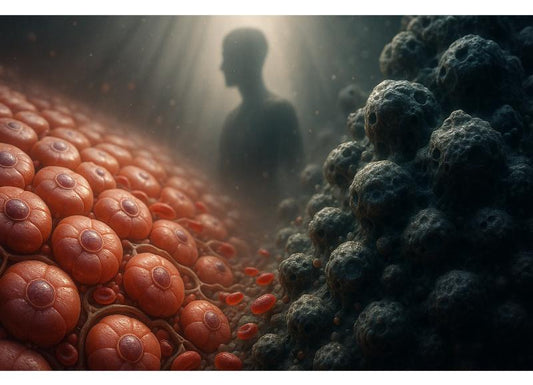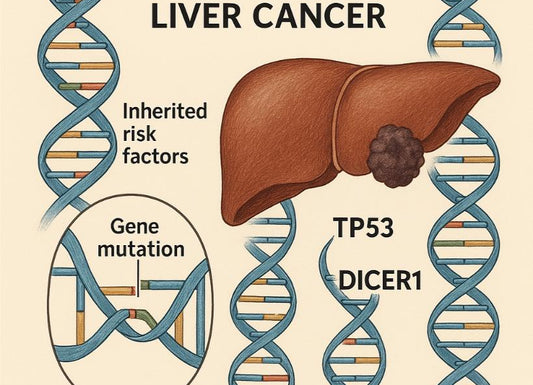Stage 2 Kidney Disease Life Expectancy: Basic Concepts Explained
 Written By
Jaclyn P. Leyson-Azuela, RMT, MD, MPH
Written By
Jaclyn P. Leyson-Azuela, RMT, MD, MPH

There are various stages for kidney disease. Stage 2 kidney disease, in particular, is a mild form of chronic kidney disease (CKD). It is a term used for a condition where the kidneys are still functioning but have early damage. If you or your loved one has been diagnosed with Stage 2 CKD, you’re likely worried about stage 2 kidney disease life expectancy.
Good thing is that since the condition is early, proper management and treatment help in improving the outlook (prognosis) of patients. Men and women who are 40 years old and above had an average life expectancy of 33 years after the diagnosis of Stage 2 CKD.
Key Takeaways
-
Stage 2 kidney disease is defined as a condition with an estimated glomerular filtration rate (eGFR) of 60-89 ml/min/1.73 m²
-
The average life expectancy for patients who are above 40 years old is 33 years (30.5 to 34.6 years)
-
While the damage is not reversible, the progression of stage 2 kidney disease can be slowed through adequate control of blood pressure, healthy diet and lifestyle, and medications
-
Regular testing and monitoring is important to track kidney function and prevent further progression or complications
What is Stage 2 Kidney Disease?
Stage 2 kidney disease is defined as a condition where the kidney’s estimated Glomerular Filtration Rate (eGFR) is 60-80 ml/min/1.73 m². It means that the kidney is still at the early phase of chronic kidney disease. It shows there is mild damage to the kidney but the kidney still functions at near-normal levels.
The eGFR reflects how well your kidneys filter waste products from your blood. So it is expected to see mild damage signs like protein in your urine (proteinuria) that persists for three or more months in stage 2 CKD. The mildly reduced kidney function with evidence of mild kidney damage offers a delineation of stage 2 CKD from healthy kidneys and advanced CKD.
This stage is important because it gives a window of opportunity for your doctor to intervene and manage the condition properly. These interventions can significantly slow down the progression of kidney damage.
According to the Centers for Disease Control and Prevention (CDC), an estimated 14% of people in the United States have CKD. About 90% of people have CKD but are not aware of it.
What Causes Stage 2 CKD?

Stage 2 kidney disease is caused by conditions that can damage the kidney’s filtering systems. The leading causes of kidney disease include:
-
Diabetes
-
High blood pressure
Diabetes mellitus (a condition with increased blood sugar) contributes to as much as 50.62% of CKD cases. High blood pressure (hypertension), on the other hand, contributes to as much as 23.26% of CKD cases. In other words, these conditions, when present, are leading drivers for the development of chronic kidney disease.
But there are also other conditions that can lead to CKD, including:
-
Glomerulonephritis (swelling of the kidney’s filtering units)
-
Polycystic kidney disease (an inherited condition that causes cysts to grow throughout your kidneys)
-
Recurrent urinary tract infection
-
Long-term use of non-steroidal anti-inflammatory drugs (NSAIDs are pain medications)
Knowing what causes the CKD is important because treating the primary cause often sets the foundation for your treatment plan.
What Are the Symptoms of Stage 2 Kidney Disease?

Many people with stage 2 kidney disease don’t experience any symptoms at all. If any, there were only a few—but nonspecific—symptoms of the disease. It is silent, which is why the data suggests that 90% of people with CKD have the condition but they don’t know about it.
Your kidneys are quick to adapt to changes in body physiology (functioning). Renal compensation to changes may take 12-24 hours or several days to weeks. It depends on what causes the change. So if the kidneys can still adapt, you may not feel sick at all.
However, some people may feel nonspecific symptoms (usually felt in advanced stages of the disease like stage 4 and 5), which may be caused by other conditions, such as:
-
Increasing fatigue
-
Swelling in the ankles and feet
-
Changes in patterns of urination
-
Difficult to control high blood pressure
The absence of clear-cut and specific symptoms make lab testing vital especially when you have high sugar levels in the blood, high blood pressure, or a family history of kidney disease. Blood work and urine testing can catch the disease early long before you feel anything.
How Long is the Stage 2 Kidney Disease Life Expectancy?
When diagnosed with stage 2 CKD, one of the pressing and worrying questions to answer is until when? A journal in Oxford Academic showed that men and women who are 40 years old had an average life expectancy of 33 years. To break down, men 40 years old had a life expectancy of 30.5 years, while women of the same age had 34.6 years.
In another study published in Springer Nature, males and females at age 30 years old with stage 2 CKD had 39.1 and 43.8 years remaining, respectively.
Age plays a factor when it comes to life expectancy for patients with CKD. After the age of 40, the glomerular filtration rate (GFR) decreases by 10 ml/min each decade. There are exceptions to this, however, suggesting that some elderly maintain a stable renal function hence normal aging rather than disease.
Does Gender Affect Life Expectancy with Stage 2 Kidney Disease?
Yes. As mentioned previously, males tend to have lower expectancy (30.5 years) than females (34.6 years).
However, the exact reason why there is a discrepancy between males and females in terms of life expectancy after stage 2 kidney disease is not well-understood. However, some attempted explanations could be attributed to:
-
Hormonal factors
-
Different patterns of underlying diseases
-
Differences in how men and women access healthcare
-
Adherence or compliance to treatment plans
Can You Improve Life Expectancy with Stage 2 Kidney Disease?

Yes. Stage 2 kidney disease may represent mild but irreparable damage but you can take necessary steps to stop it from progressing. When you are able to stop it from progressing, this potentially extends your life expectancy.
But from a public health standpoint, this poses grand challenges to date.
Is Stage 2 Kidney Disease Reversible?
No. A diagnosis of stage 2 kidney disease represents a damage to the kidney that cannot be reversed. There is no cure for this condition.
The filtering units of your kidney called the nephrons don’t regenerate. Once they are damaged, it is irreparable and cannot be reversed. But there are cases when the kidney injury is acute or temporary, and in these conditions, when the primary cause is removed or treated, the kidney function usually improves.
However, for stage 2 CKD, it is not the cure that’s pressing but the prevention of further damage or progression. You can even maintain your current level of kidney function for as long as possible.
What Lifestyle Changes Can Slow Disease Progression?

Several lifestyle changes can help slow down the progression of stage 2 CKD, including:
-
Low-sodium (salt) diet
-
Controlling blood pressure
-
Regular physical activity (20-30 minutes exercise)
-
Improved circulation
-
Lowers blood pressure
-
Helps manage blood sugar levels
-
Quitting smoking (smoking damages blood vessels)
-
Maintaining a healthy weight
-
Limit alcohol consumption (if not abstain)
-
Stay well-hydrated (unless you have been advised to restrict fluid intake by your healthcare provider)
All of these changes are extremely useful during the early stages of disease. This is why stages 1 and 2 CKD are the best window of opportunity to adapt healthy practices (even better to adapt it even before any form of kidney disease develops).
Which Treatments Help Manage Stage 2 CKD?
Specific medical treatment to manage stage 2 CKD does not exist. Instead, medications are given to control many of the predisposing factors that can cause the condition and the complications.
Diabetes Mellitus
There are various medications that can treat diabetes mellitus. It helps in controlling diabetes, thus helping the kidney function properly with no further damage incurred. Medications include:
-
Metformin
-
Dapaglifozin
-
Insulin
-
Tirzepatide
-
Semaglutide
A lot more are being added to this list as research is underway.
High Blood Pressure
The aim of medications to control blood pressure in CKD patients is to regulate it below 140/90 mmHg. But when you also have diabetes mellitus, this blood pressure should go down to 130/80 mmHg.
Medications that help control blood pressure include:
-
Angiotensin Converting Enzyme (ACE) inhibitors like lisinopril, ramipril, or enalapril
-
Angiotensin-II Receptor Blocker (ARB)
Other Medications
If you have been diagnosed with stage 2 CKD, you may notice additional medications like:
-
Anti-hypercholesterolemia
-
Sodium zirconium cyclosilicate (for people with hyperkalemia or increased potassium levels in the blood)
-
Diuretics like furosemide or spironolactone (to remove excess fluid especially for people with ankle swelling—usually a manifestation of advanced stages of CKD)
-
Iron supplements (for people with iron deficiency anemia due to CKD)
-
Bone supplements like vitamin D, calcium and phosphate
-
Steroid or cyclophosphamide (for people with glomerulonephritis as the culprit of kidney disease)
How is Stage 2 Kidney Disease Diagnosed and Monitored?
Diagnosing and monitoring stage 2 kidney disease involves a mix of blood tests, urine analysis, and at times imaging studies.
The key diagnostic workup is the assessment of your eGFR, which measures how well your kidneys are working.
Regular monitoring is important in stage 2 CKD because it can progress silently, without symptoms. Your healthcare provider will establish a routine timeline for you to get checked and evaluated.
Any changes in your kidney function will prompt changes in intervention to ensure improvement in the outcome. This is where early intervention is extremely important.
What Tests Diagnose Stage 2 CKD?
There are several tests that can be performed together to diagnose stage 2 CKD, including:
-
eGFR: Blood test that measures creatinine levels to calculate how well the kidneys can filter waste
-
Stage 2 CKD has an eGFR levels between 60 and 89 ml/min/1.73m²
-
Urine analysis: Checks protein (particularly albumin) levels in your urine, which should not be present if the kidneys are functioning properly
-
Albumin-to-Creatinine Ratio (ACR): It measures the amount of albumin that’s leaking to your urine
-
Imaging tests: Used to examine kidney structure and look for abnormalities that may cause problems, like cysts or obstructions
-
Ultrasound
-
Computed tomography (CT) scan
-
Additional blood tests:
-
Glucose levels (diabetes)
-
Antinuclear antibodies (autoimmune disorders)
How Often Should You Get Tested for Stage 2 Kidney Disease?

Monitoring and testing for CKD depends on the frequency of testing for stage 1 and 2 kidney disease. It was mentioned that for stage 1 and 2, patients need occasional testing to ensure that the kidney disease is stable and not progressing.
Fixed monitoring and testing, according to guidelines, have been mapped out for Stage 3, 4, and 5. The frequency of monitoring can be done as frequently as three months or 12 months. It depends on what the monitoring is for.
Your doctor will know the right frequency based on your presentation and current management. If you have additional risk factors like diabetes or high blood pressure, the monitoring could be increased.
If your recent tests are worsening, you may need more frequent monitoring.
When Should You See a Doctor for Stage 2 Kidney Disease?
Your doctor will set up a regular follow-up appointment once you have been diagnosed with stage 2 kidney disease. The routine appointments will allow your doctor to monitor kidney function, stability of the condition, and assess if it’s progressing.
However, there are occasions when it warrants urgent medical attention. Seek medical care immediately if you notice the following:
-
Swelling on your legs and ankles or around the eyes
-
Blood in the urine
-
Foamy characteristic in the urine
-
Increasing fatigue
-
Persistent nausea
-
Unexplained weight loss
These symptoms could signify worsening kidney function or complications. Furthermore, you should also discuss any new medication you are taking with your doctor. Some of these medications (particularly self-medications) could affect kidney function.
If you have diabetes or high blood pressure, you will benefit from seeking care from a nephrologist (a specialist of the kidneys) in addition to your primary care doctor.
What Should You Avoid with Stage 2 Kidney Disease?
Living with stage 2 kidney disease requires certain changes. Habits and substances need to be regulated as these could damage your kidneys. Some foods and medications put additional strain on your kidneys, potentially making the damage progress even faster.
Being aware of these factors can help support your kidney’s function and health.
Are There Medications to Avoid in Stage 2 CKD?
Yes. Several types of medications can potentially damage your kidneys and must be used with caution if you have stage 2 CKD.
-
Pain medications like nonsteroidal anti-inflammatory drugs (NSAIDs): These can reduce blood flow to the kidneys and should be avoided
-
Ibuprofen
-
Naproxen
-
High dose aspirin
-
Antibiotics: They can cause kidney damage with prolonged use
-
Aminoglycosides
-
Contrast dyes (used in many imaging modalities) can put strain on the kidneys. If really necessary, preventive measures should be taken
-
Herbal supplements (marketed for health benefits may contain ingredients that can be damaging to the kidneys)
Always discuss your condition with your doctor and all your healthcare providers. Ask your pharmacist before taking any new medication, including over-the-counter (OTC) drugs or supplements.
What Foods Should You Limit in Stage 2 CKD?
All kidney-friendly diets should involve a low-sodium (salt) diet. Some diets give attention to phosphorus and potassium depending on your most recent lab results.
High sodium foods can raise blood pressure and thus increases kidney stress, including:
-
Processed foods
-
Canned goods
-
Deli meats
-
Fast foods
Foods high in phosphorus, including:
-
Dairy products
-
Nuts
-
Dark sodas
Some people need to watch out for foods high in potassium although this is less strict in higher stages of CKD. Foods to watch include:
-
Bananas
-
Potatoes
-
Tomatoes
-
Oranges
Protein intake needs to be balanced. Too much protein puts a strain on the kidneys, while too little leads to muscle loss.
If you want to know more about diet and nutrition, you should talk to a nutritionist or dietician that specializes in kidney health. The diet may be adjusted according to your most recent lab values.
Does Smoking Affect Stage 2 CKD?
Smoking poses a serious health threat to kidney health, particularly if you have been diagnosed with stage 2 CKD. Cigarette smoke contains toxins that can damage the blood vessels in the body, including small ones. The damage could restrict blood flow to the kidney, which could accelerate the damage. Smokers with kidney disease have faster progression of CKD than non-smokers.
Smoking also reduces the effectiveness of some blood pressure medications, which also contributes to the difficulty controlling the condition.
Furthermore, smoking increases the risk for cardiovascular diseases (conditions of the heart and blood vessels), which often occurs in kidney disease.
Quitting smoking at any stage of kidney disease can help slow down the progression of the disease, thus improving your overall outcome. Smoking cessation is then regarded as one of the important steps you can take to protect kidney health.
Conclusion

Understanding stage 2 kidney disease life expectancy should involve knowing what to do to keep it from progressing. It must start from knowing what it is, how to monitor it, how to diagnose it, and what to avoid to stop it from progressing so you can have increased years of survival. Preventive measures should be taken as well, which is why early detection is just as important.
Frequently Asked Questions
Does gender impact life expectancy in stage 2 CKD?
Yes. Women have slightly higher life expectancy in stage 2 CKD than men.
How often should you get tested if you have stage 2 CKD?
There is no fixed schedule for testing and monitoring for stage 1 and 2 CKD. Your doctor should be able to provide you with your routine appointments.
Do you need to limit certain foods if you have stage 2 CKD?
Yes, you do. Certain foods when consumed in excess can affect your kidney health and may accelerate kidney damage. The most important limitation is low-salt in your diet.
Written by Jaclyn P. Leyson-Azuela, RMT, MD, MPH
Jaclyn P. Leyson-Azuela, RMT, MD, MPH, is a licensed General Practitioner and Public Health Expert. She currently serves as a physician in private practice, combining clinical care with her passion for preventive health and community wellness.
References
-
Chronic Kidney Disease in the United States, 2023. (2024, May 15). Chronic Kidney Disease. https://www.cdc.gov/kidney-disease/php/data-research/index.html
-
CKD staging. (n.d.). UK Kidney Association. https://www.ukkidney.org/health-professionals/information-resources/uk-eckd-guide/ckd-staging#:~:text=Typically%20patients%20will%20be%20assessed,the%20associated%20complications%20of%20CKD.
-
García, G. G., Iyengar, A., Kaze, F., Kierans, C., Padilla-Altamira, C., & Luyckx, V. A. (2022). Sex and gender differences in chronic kidney disease and access to care around the globe. Seminars in Nephrology, 42(2), 101–113. https://doi.org/10.1016/j.semnephrol.2022.04.001
-
Mallappallil, M., Friedman, E. A., Delano, B. G., McFarlane, S. I., & Salifu, M. O. (2014). Chronic kidney disease in the elderly: evaluation and management. Clinical Practice, 11(5), 525–535. https://doi.org/10.2217/cpr.14.46
-
NHS (2025, April 14). Chronic Kidney Disease Treatment. nhs.uk. https://www.nhs.uk/conditions/kidney-disease/treatment/
-
Neild, G. H. (2016). Life expectancy with chronic kidney disease: an educational review. Pediatric Nephrology, 32(2), 243–248. https://doi.org/10.1007/s00467-016-3383-8
-
Renal Compensation Mechanisms | Anatomy and Physiology II Class Notes | Fiveable. (n.d.). Fiveable. https://library.fiveable.me/anatomy-physiology-ii/unit-9/renal-compensation-mechanisms/study-guide/12qCYKZURD7jRL4S
-
Turin, T. C., Tonelli, M., Manns, B. J., Ravani, P., Ahmed, S. B., & Hemmelgarn, B. R. (2012). Chronic kidney disease and life expectancy. Nephrology Dialysis Transplantation, 27(8), 3182–3186. https://doi.org/10.1093/ndt/gfs052
-
Vaidya, S. R., & Aeddula, N. R. (2024, July 31). Chronic kidney disease. StatPearls - NCBI Bookshelf. https://www.ncbi.nlm.nih.gov/books/NBK535404/
-
Wang, M., Li, J., Li, Y., Yao, S., Zhao, M., Wang, C., Wu, S., & Xue, H. (2019). The effects of hypertension and diabetes on new‐onset chronic kidney disease: A prospective cohort study. Journal of Clinical Hypertension, 22(1), 39–46. https://doi.org/10.1111/jch.13768
-
Weckmann, G., Wirkner, J., Kasbohm, E., Zimak, C., Haase, A., Chenot, J., Schmidt, C. O., & Stracke, S. (2022). Monitoring and management of chronic kidney disease in ambulatory care – analysis of clinical and claims data from a population-based study. BMC Health Services Research, 22(1). https://doi.org/10.1186/s12913-022-08691-y
-
Yacoub, R., Habib, H., Lahdo, A., Ali, R. A., Varjabedian, L., Atalla, G., Akl, N. K., Aldakheel, S., Alahdab, S., & Albitar, S. (2010). Association between smoking and chronic kidney disease: a case control study. BMC Public Health, 10(1). https://doi.org/10.1186/1471-2458-10-731

Jaclyn P. Leyson-Azuela, RMT, MD, MPH, is a licensed General Practitioner and Public Health Expert. She currently serves as a physician in private practice, combining clinical care with her passion for preventive health and community wellness.



